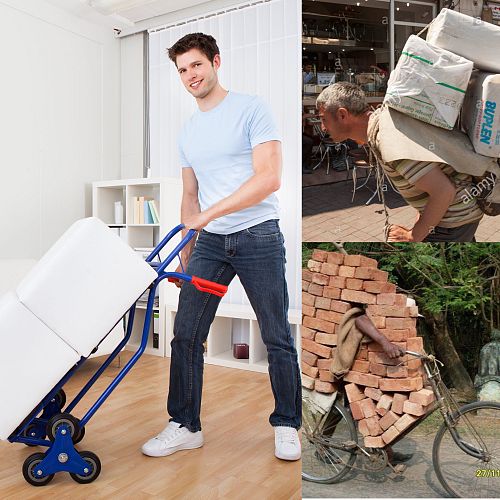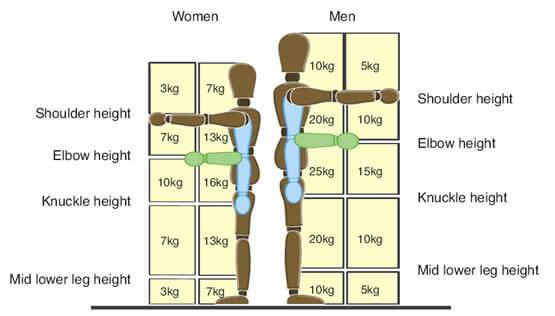
Friday September 21, 2018 14:57
All our jobs require at some point, a form of lifting, carrying, and pulling - and in some jobs the lifting and carrying involves heavy or bulky materials.
Examples of such tasks include:
- Putting a ream of photo copying paper into the cupboard
- Carrying a box of tools as a mechanic
- Carrying, or installing materials like frames boxing and windows if you’re a builder
All these items can be both bulky and heavy, require bending over for a period of time, or are repetitive tasks.
Examples of bulky / heavy / repetitives tasks include:
- Raking or laying of bricks
- Working on a production line
- Filling a photo copying machine with paper
During these actions, our backs are twisted and bodily stress increases if you are standing on unstable ground, or have a poor body position.
Handling small loads for long periods without a break, can result in fatigue and then lead to injury.
All these factors mean that there is no truly safe weight limit for any manual handling (though see guidelines below).
The degree of risk is linked to:
- The nature of the job
- The load
- The circumstances in which the lift takes place
- How often we are lifting
- The weight of the item
- The type of item being lifted
Manual handling is one of the biggest risks that we all face in the workplace, and in some occupations the risk is greater than others.
There is nothing more debilitating than a sore back, and even worse if you're off work with what is often cited on the ACC claim form as "Lumber Strain to the lower back".
So what steps can we take to avoid such risks?
9 Steps You Can Take To Reduce The Risk of Injury During Heavy Or Repetitive Tasks
- Plan. The first step is to think first about what needs to be done before starting a heavy or repetitive task
- Optimise layout. Consider your site or office layout, ease of access and the storage of materials to reduce double handling
- Utilise a trolley. Work with the courier or other staff and people and use perhaps a Hiab/trolley to deliver and move materials, also to reduce double handling
- Install a platform. Install a loading platform if you’re working on a high level that can be accessed by a lifting device so as to reduce manual handling
- Use lifting equipment. Purchase or hire equipment to support lifting and carrying of materials, especially heavy materials or where you may have to carry a number of items throughout the day
- Clear pathways. Keep pathways, the site and floor tidy to reduce the risk of tripping and stumbling when handling bulky or heavy materials and items
- Communicate. Have good communications, with one person nominated first to take the lead when lifting and carrying
- Use correct technique. Use the right lifting techniques. Establish a stable base and grip on materials, keep the load close to your body, move your whole body and bend at the knees
- Take a break. Do not work for long periods without a break
What Are The Guidelines On The Maximum Weight You Should Attempt Lift?
The maximum weight you can lift depends on:
- Your gender
- The distance of the load from your body
- The height of the load
The following diagram depicts the guidelines:

For example:
- If you are male, and hold the weight close to your body at around waist height, the guidelines suggest that the maximum weight you should lift is 25kg
- This is reduced to 5kg for loads being held at arm’s length or above shoulder height
- If you are female, and hold the weight close to your body at around waist height, the guidelines suggest that the maximum weight you should lift is 16kg
However, it should always be remembered that these are guidelines, and that age, health, body build, stamina and so on will mean that the above weights are just that, guidelines only - and they will vary from person to person.
Remember, the lifting person is the final judge on their ability to lift various items.
For further advice or training in manual handling please discuss this with your Securo Health and Safety Consultant.



